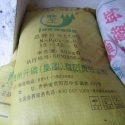10 Oct 2012
Agricultural cultivation system in China

Progress
As we know, a multiple and perfect cultivation system is the base of high farmland productivity, sustainable agricultural resource use and development, and food security. With the development of science and technology and the progress of human society, the agricultural cultivation system in the world tends to be more scientific and systematic step by step. China has a long farming history and come through mainly three phases of cultivation system: original cultivation system, traditional cultivation system and modern cultivation system. In last six decades, study on the cultivation system has achieved great progress and made great contribution in the country. They mainly presented as:
1) Planting modes have changed greatly, especially since 1980s. At present, multiple cropping, intercropping and relay cropping have become the special characteristics that know China’s cultivation system from many other countries’systems. For example, the “wheat-corn-bean”system in the hilly region of southwest China, the system of cassava intercrop with water melon, peanut, soybean etc in Guangxi province, the “vegetable-rice-vegetable”system in south China region, the “corn-wheat”rotation system in north-central China region, the ecological intercrop system of “forest-grain-cash crop”in northeast China region and so on. They all greatly improved and made great contribution to China’s planting production.
2) Changes on the cropping system overall arrangement and structure adjustment. Since 1980s, many regions adjusted their cropping system overall arrangements and structures to efficient use natural resources. These adjustments achieved great positive effects. For example, in Xinjiang region, the advantage on cotton planting has been greatly developed; peanut planting area was increased year after year and has made great economic benefit in northeast region.
3) Optimized the soil cultivation practices. In recent years, different regions put forward different soil cultivation practices and technologies that were adapt to local ecological conditions. For example, soil deep plough in northeast region; land shallow circle practice and no/less tillage practice in southeast region. All of these practices increased not only crop yield, but also the ability of soil and water conservation.
4) Rotate system adjusted for high yield and efficiency. For example, the “corn-soybean rotation”in Heilongjiang is good for improving soil fertility and overcome the holdback of continuous cropping. In rice planting regions, paddy-upland rotation improved not only rice soil fertility but also saved water and increased rice yield. In south China, the rotation of rice with sugarcane, vegetable and banana greatly increased economic benefit with soil fertility improvement.
5 ) Develop multiple upland cultivation systems to increased yield and reduced water and soil loss. For example the grain crops and forage grasses rotation in inner Mongolia; and sandy soil cultivation system in Gansu and Ningxia provinces.
6) Cultivation systems for mechanization. With the development of agricultural mechanization in China, some cultivation systems suitable for machine operation have developed. For example, the soybean-corn rotation in Heilongjiang region; rice–wheat cropping system in south region.
7) In addition, the theoretic research on the cultivation system has also achieved great progress. These theories have been further improved and enriched from farming practice as well. The relative issues include multiple cropping, rotation plough land, continuous cropping, protective cultivation, etc.
Main problems
The main problems on cultivation system in China are presented in following contradictions:
1) The contradictions of cropping index decrease with national grain security. In last six decades, although China’s cropping index increased about 30%, but since 1990s, the area of “fallow field in winter season”increased quickly in south China, while the area of “fallow field in summer season”increased also in the main vegetable planting regions. The data from the Ministry of Agriculture showed that there were over 13 million ha winter fallow field in the 16 provinces in south China, and it occupied about 60% of winter planting area. In the vegetable planting regions, the area of summer fallow field over 3.4 million ha. With the large population, China should annually increased grain production 25 million T in next 10 years, therefore, how to assort with the contradiction of cropping index decrease with grain security is very important.
2) The contradiction of mechanization development with cropping system reform. Although China’s agricultural mechanization has achieved great progress in recent years, but it still in a lower level. At present, China’s mechanization plough, sowing and harvesting ratios are 57%, 33% and 27% respectively. The major problem is the cultivation system not very suitable for machine operation and the family farm size is too small.
3) The contradiction of farmland quality decrease with fertility improvement. As higher cropping index especially in south region, the farmland fertility has been exhausted and become more poor by long term continuous cropping, without fallow and rational rotation, fertilization.
4) The contradiction of climate change with cultivation system. In last five decades, due to the climate changes, the cultivation system lines have moved from south to north more or less, the frequency of climate disaster such as drought, flooding, high and low temperature has increased. So we need to make adjustment in our cultivation system to meet the climate changes. For example in northeast region, the cultivation system has changed from sorghum, millet and soybean as dominant crops to corn and rice as dominant crops. The crop rotations have changed from sorghum-millet-soybean and/or corn-soybean-sorghum to corn-soybean. Accordingly, the soil plough and management practices also changed from top soil repression, ridge cultivation to deep plough and no tillage, straw mulching in different periods. At the same time, fertilization patterns in northeast region also changed from only farm manure to farm manure plus commercial fertilizers and then to rational fertilization based on soil testing.

